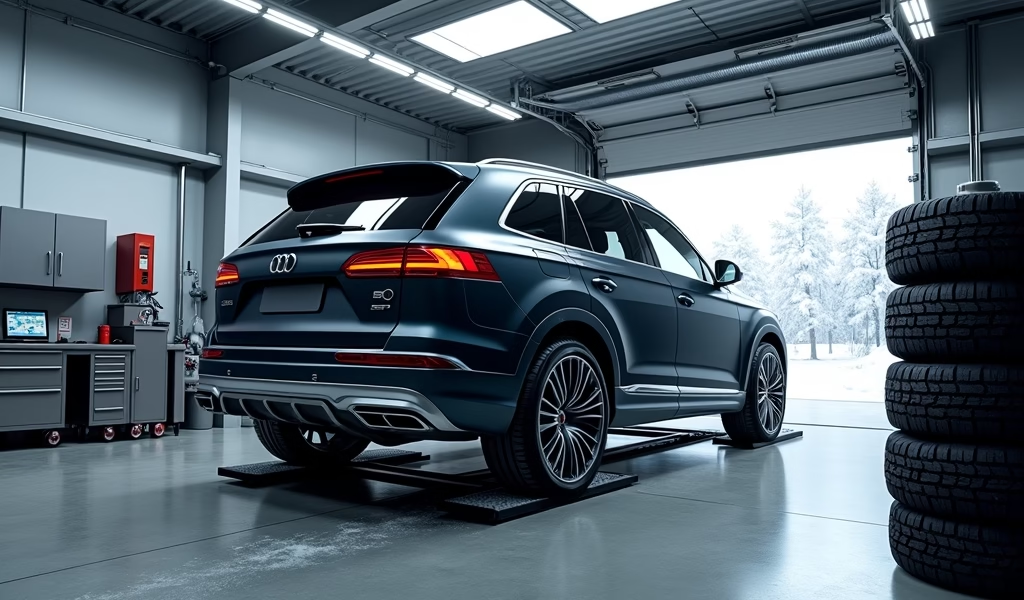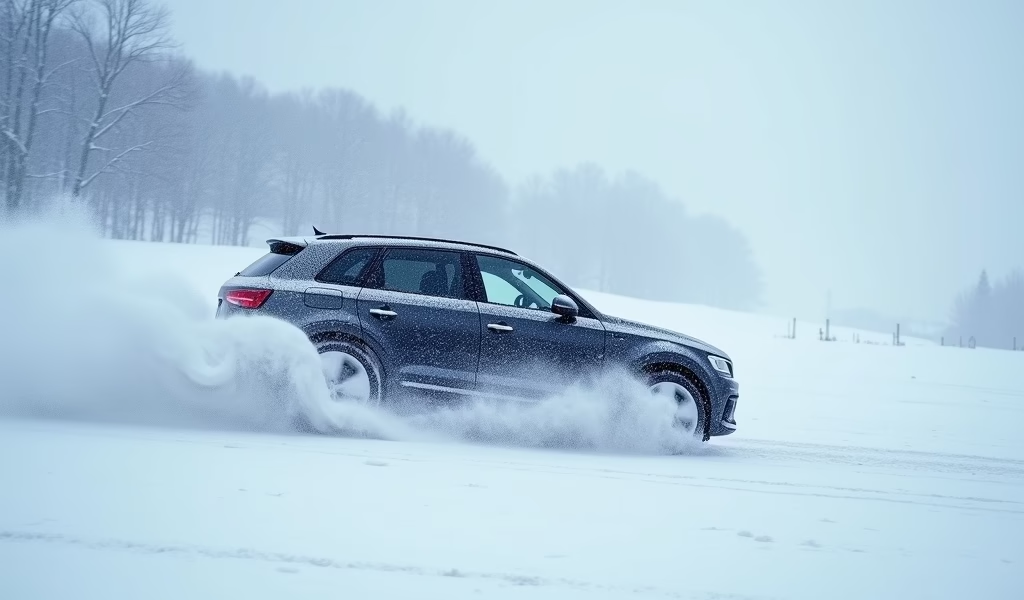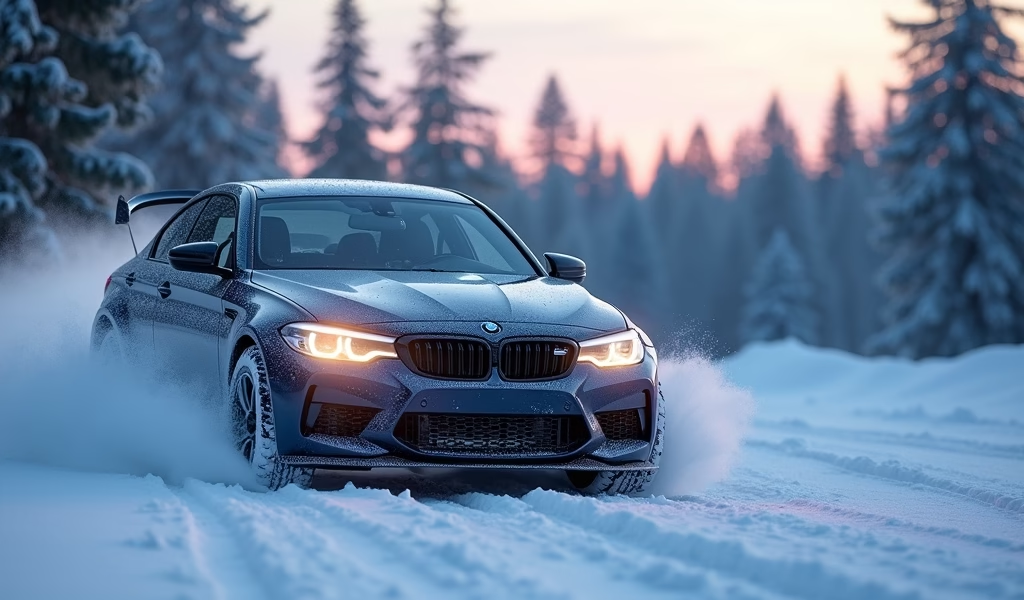Overview
All-Wheel Drive (AWD) provides benefits for acceleration and traction in snow, but winter tires are more crucial for overall safety as AWD doesn’t improve braking distance. Safe winter driving requires not just vehicle features but also proper techniques, increased following distance, regular maintenance, and understanding your vehicle’s limitations in severe conditions.
Table of Contents
- What Is All Wheel Drive?
- AWD vs. Other Drivetrains in Snow
- Benefits and Limitations of AWD in Snow
- Tip 1: Winter Tires Are More Important Than AWD
- Tip 2: Adjust Your Driving Techniques
- Tip 3: Maintain Safe Following Distance
- Tip 4: Prepare Your AWD Vehicle for Winter
- Tip 5: Know Your Vehicle’s Limitations
- Conclusion
- Frequently Asked Questions
When winter arrives and blankets our roads with snow and ice, many drivers find themselves wondering about the best vehicle for navigating these treacherous conditions. All Wheel Drive (AWD) systems are often marketed as the perfect solution for winter driving, but is that really the case? As a mechanic with over 15 years of experience working in areas with harsh winters, I’ve seen firsthand how different vehicles perform when the snow falls.
In this article, we’ll explore whether AWD truly gives you an advantage in snowy conditions, and I’ll share five essential tips that will help you drive more safely this winter, regardless of what’s under your hood. These insights come from years in the garage and countless conversations with drivers who’ve faced everything from light dustings to full-blown blizzards.
What Is All Wheel Drive?
Before diving into winter performance, let’s make sure we’re all on the same page about what AWD actually is. In simple terms, All Wheel Drive is a system that can deliver power to all four wheels simultaneously. Unlike AWD versus FWD systems where power goes only to the front wheels, AWD can distribute engine power between both the front and rear axles, and in more sophisticated systems, between individual wheels.
Modern AWD systems come in two main varieties: full-time AWD, which continuously powers all four wheels, and part-time or automatic AWD, which primarily drives two wheels (usually the front) and engages the other two when slippage is detected. These systems use a complex network of sensors and differentials to monitor traction conditions and adjust power delivery accordingly.
What makes AWD different from Four-Wheel Drive (4WD) is that AWD systems typically operate automatically without driver input, and they’re designed primarily for improved traction on roads rather than serious off-road conditions. They’re generally lighter, more fuel-efficient, and better suited to everyday driving than traditional 4WD systems.
AWD vs. Other Drivetrains in Snow

To understand if AWD is truly advantageous in snow, we need to compare it to the alternatives: Front-Wheel Drive (FWD) and Rear-Wheel Drive (RWD). Each has distinct characteristics when the roads turn white.
Front-Wheel Drive vehicles place both the engine and transmission over the drive wheels, providing decent weight distribution for snow traction. FWD cars typically perform adequately in light to moderate snow, especially when equipped with good winter tires. Their main advantage is predictable understeer when traction is lost – the front wheels slide forward rather than the rear end swinging out.
Rear-Wheel Drive vehicles traditionally struggle the most in snow. With less weight over the drive wheels, RWD cars and trucks often experience wheel spin during acceleration and can be prone to fishtailing. Many RWD vehicle owners add sandbags or other weight to the trunk to improve traction, but they still face challenges on slippery roads.
All-Wheel Drive combines the best attributes of both systems. By powering all four wheels, AWD provides more balanced traction during acceleration. The ability to redirect power to wheels with grip means that even if two wheels are on a slippery patch, the other two can potentially still provide forward motion.
According to a study by AAA, vehicles with AWD can accelerate on snow-covered roads with 33% more effectiveness than their two-wheel-drive counterparts. This can be the difference between making it up a snowy hill or finding yourself sliding backward into traffic.
Benefits and Limitations of AWD in Snow
Let’s be crystal clear about what AWD does and doesn’t do in snowy conditions. After working on thousands of vehicles and hearing countless winter driving stories from customers, I’ve noticed some persistent misconceptions.
AWD Benefits in Snow:
- Improved acceleration on slippery surfaces
- Better ability to climb snow-covered hills
- Reduced likelihood of getting stuck in moderate snow
- More stable traction when accelerating on uneven surfaces
- Greater control when driving through slushy or partially cleared roads
AWD Limitations in Snow:
- No improvement in braking distance (a common and dangerous misconception)
- Limited enhancement of cornering ability
- Can create a false sense of security that leads to driving too fast for conditions
- Doesn’t help navigate deep snow beyond the vehicle’s ground clearance
- Less effective on ice than on snow (ice traction is minimal regardless of drivetrain)
The most important limitation to understand is that AWD doesn’t help you stop any faster in snow. I’ve seen too many AWD vehicle owners learn this the hard way when they rear-end someone at a stoplight. The physics are simple: when braking, all vehicles – regardless of drivetrain – rely entirely on the grip between their tires and the road surface.
This brings us to our first and perhaps most crucial tip for winter driving.
Tip 1: Winter Tires Are More Important Than AWD
If you take nothing else from this article, remember this: winter tires matter far more than your drivetrain when it comes to snow performance. In my professional opinion, I’d rather drive a Front-Wheel Drive car with quality winter tires than an AWD vehicle with all-season tires when the temperature drops below freezing.
Winter tires use specialized rubber compounds designed to remain flexible in cold temperatures. All-season tires become significantly harder and less grippy when temperatures fall below about 45°F (7°C), while winter tires maintain their elasticity and road-gripping properties.
The tread patterns on winter tires are also specifically engineered for snow and ice, with deeper grooves, more aggressive blocks, and thousands of tiny slits called “sipes” that create biting edges on icy surfaces. These design elements allow winter tires to achieve up to 50% more traction on snow compared to all-season tires, according to testing by Tire Rack.
The combination of AWD and winter tires provides the best possible winter performance, but if your budget only allows for one upgrade, choose the winter tires. They improve every aspect of winter driving – acceleration, cornering, and critically, braking – whereas AWD only helps with acceleration.
For those shopping for a reliable AWD SUV, remember that your tire choice will still be the determining factor in how well that vehicle actually performs when the snow flies.
Tip 2: Adjust Your Driving Techniques
Even with AWD and winter tires, you’ll need to adjust your driving techniques when roads are snow-covered. The physics of winter driving demand specific approaches that many drivers never formally learn.
Gentle, Progressive Inputs
Smooth, gradual inputs are essential on slippery surfaces. Abrupt acceleration, braking, or steering can quickly overcome available traction. Think of it this way: you have a limited “traction budget” when driving on snow, and every control input (accelerating, braking, turning) withdraws from that budget. Making multiple aggressive inputs simultaneously is like trying to withdraw more than your account holds – you’ll end up with a traction overdraft.
Looking Ahead
Increase your visual scanning distance in winter conditions. By looking further ahead – at least 12-15 seconds down the road instead of the usual 8-10 seconds – you’ll have more time to spot potential hazards and make gradual adjustments rather than sudden reactions.
Maintaining Momentum
On snow-covered roads, maintaining gentle momentum can be more effective than stopping and starting. When approaching hills, a slight increase in speed (while remaining safe, of course) before the incline can help carry you over the crest without wheel spin. This technique requires practice and good judgment – it’s not about speeding, just about smart momentum management.
Corner Braking
Complete your braking before entering corners. Attempting to brake while turning divides your traction budget and increases the risk of skidding. Instead, brake gently in a straight line, release the brakes as you begin to turn, and then apply light throttle once you’re through the apex of the turn.
These techniques apply to all vehicles in snow, but they’re particularly important to master if you’re relying on your AWD system to help in winter conditions. Remember, AWD can help you accelerate, but it can’t bend the laws of physics when it comes to stopping or cornering.
Tip 3: Maintain Safe Following Distance

One of the most common winter accidents I see involves vehicles rear-ending others at intersections or in slowdowns. Many drivers, especially those in AWD vehicles, simply don’t adjust their following distance for winter conditions.
On dry pavement, the recommended following distance is at least 3 seconds. In snow or on ice, you should extend this to a minimum of 8-10 seconds. This dramatic increase accounts for several winter-specific factors:
- Increased stopping distances (up to 10 times longer on ice)
- Reduced visibility during snow or when spray from other vehicles obscures your view
- The unpredictability of how other drivers might react to slippery conditions
- The possibility that a vehicle ahead might get stuck or lose traction suddenly
To measure your following distance, pick a stationary object ahead like a sign or tree. When the vehicle ahead passes it, count “one-thousand-one, one-thousand-two…” until you reach the same point. In snow, you shouldn’t reach that object before counting to “one-thousand-eight” at minimum.
Even with the best SUV for snow conditions, maintaining proper distance is non-negotiable for safety. No vehicle, regardless of its drivetrain or tires, can defy physics when it comes to stopping distance on slippery surfaces.
Tip 4: Prepare Your AWD Vehicle for Winter
AWD systems require specific maintenance to perform optimally in winter conditions. As a mechanic who’s seen countless AWD systems fail at the worst possible moments, I strongly recommend this pre-winter checklist:
AWD System Maintenance
- Check and change transfer case fluid according to manufacturer recommendations
- Inspect front and rear differential fluid levels and condition
- Examine CV boots and axles for cracks or damage that could let moisture in
- Test the AWD system to ensure it engages properly (some systems have diagnostic modes)
General Winter Preparation
- Test battery strength – cold weather reduces battery capacity by up to 50%
- Check tire pressure weekly (pressure drops in cold temperatures)
- Verify that all lights are working properly for improved visibility
- Replace wiper blades with winter-specific versions if available
- Keep washer fluid reservoir full with winter-grade fluid (rated to -20°F or lower)
Remember that AWD systems often place additional strain on your battery and electrical system. In extremely cold conditions, this can be the difference between a vehicle that starts reliably and one that leaves you stranded. A professional battery test before winter is one of the most cost-effective preventive measures you can take.
I also recommend carrying a winter emergency kit that includes items like a small shovel, traction aids (sand, cat litter, or purpose-made traction mats), jumper cables, flashlight, blanket, and non-perishable snacks. Even with AWD, you could find yourself waiting for help in frigid conditions if a major storm hits.
Tip 5: Know Your Vehicle’s Limitations
After years of helping customers extract their vehicles from snowbanks, I’ve noticed a pattern: AWD often creates a false sense of security. The most important winter driving skill might be knowing when conditions exceed your vehicle’s capabilities – regardless of its drivetrain.
Here are some situations where even AWD vehicles should proceed with extreme caution or stay parked:
- Ice storms – when freezing rain creates a glaze of ice on roads, no consumer vehicle is truly safe
- Deep snow that exceeds your vehicle’s ground clearance
- Whiteout conditions where visibility is severely limited
- Unplowed roads with more than 6-8 inches of snow
- Hills with visible ice patches
Ground clearance deserves special mention here. Many AWD crossovers and cars sit relatively low to the ground. When snow depth approaches your vehicle’s clearance height, you risk “high centering” – where your vehicle’s undercarriage rests on packed snow while the wheels lose contact with the surface that provides traction. At that point, AWD becomes irrelevant because the wheels can’t effectively engage with the road surface.
The most experienced winter drivers know that sometimes, the safest decision is to delay your trip or find alternative transportation. No meeting or errand is worth risking your safety when conditions turn truly hazardous.
Conclusion
Is AWD good in snow? Yes, absolutely – but with important caveats. AWD provides significant advantages when accelerating on slippery surfaces and can help prevent getting stuck in moderate snow. However, it offers no benefits for braking and only limited improvements for cornering.
The formula for safe winter driving isn’t simply AWD = Safety. Instead, it’s a combination of appropriate equipment (primarily winter tires), adjusted driving techniques, increased following distances, proper vehicle maintenance, and most importantly, good judgment about when conditions exceed your vehicle’s capabilities.
As someone who’s spent decades working on vehicles and hearing winter driving stories (both triumphant and disastrous), I can confidently say that the driver matters more than the drivetrain. A cautious, well-trained driver in a Front-Wheel Drive car with winter tires will fare better than an overconfident, unprepared driver in an AWD vehicle with all-season rubber.
Remember, snow-covered roads don’t care what’s powering your wheels – they demand respect from every driver, in every vehicle. Drive accordingly, and you’ll arrive safely at your destination, regardless of how many wheels are putting power to the pavement.
Frequently Asked Questions
Is AWD or 4WD better for snow?
Both systems perform well in snow, but AWD is generally better for everyday winter driving on roads. 4WD excels in deep snow and off-road conditions but typically offers less refined on-road handling.
Can you drive an AWD car in deep snow?
AWD helps in moderate snow, but deep snow is primarily limited by ground clearance, not drivetrain. If snow depth approaches your vehicle’s clearance height, you risk getting stuck regardless of AWD.
Do AWD cars need winter tires?
Yes, AWD vehicles absolutely benefit from winter tires. Winter tires improve braking, cornering, and acceleration in cold conditions, while AWD only helps with acceleration.
Does AWD help with black ice?
AWD provides minimal advantage on black ice since traction is severely limited for all vehicles. On ice, winter tires with proper siping make a much bigger difference than drivetrain type.
Is AWD worth the extra cost for winter driving?
For areas with regular snowfall, AWD is often worth the investment when combined with winter tires. If you rarely encounter snow, investing in winter tires for a Front-Wheel Drive vehicle may be more cost-effective than upgrading to AWD.

